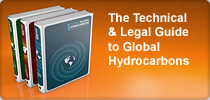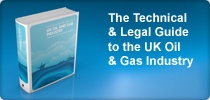THE TECHNICAL AND LEGAL GUIDE TO GLOBAL HYDROCARBONS
BOOK 3 – Preview
Chapter 15 – Hydrocarbon Emissions and Climate Change
Technical
The technical section of Chapter 15 provides an overview of the science of hydrocarbon emissions and climate change. It considers projected future energy supply and demand and the key international agreements which seek to limit emissions from the projected increase.
Legal
Chapter 15's legal section opens with a brief outline of key international climate change regulation to date and goes on to examine the different approaches taken to comply with this regulation by some of the major national and international oil and gas companies. Key commercial aspects of climate change are also discussed, including the various heads under which litigation can be brought against a company. The section ends by reviewing national obligations within the EU, the UK, the USA, India, Indonesia, Russia and China.
Chapter 16 – Global Carbon Market
Chapter 16 sets out the current global frameworks, project-based mechanisms and domestic emissions trading schemes that are in place for the trading of greenhouse gas emissions. It then provides an overview of the three main mechanisms for emissions trading – over the counter trading, carbon pools and exchanges – and the associated documentation. A brief summary of legal considerations is also provided.
Chapter 17 – Carbon Capture and Storage
Technical
Chapter 17's technical section discusses sources of carbon emissions and the principal methods of carbon capture and storage. Various practical issues are considered, including storage capacity estimations, monitoring, funding and costs. Examples of global projects are also provided.
Legal
The legal section of Chapter 17 looks at the regulation of carbon capture and storage at an international level, providing an overview of UNCLOS, the London Convention, the London Protocol and the Basel Convention. It also considers regulation at a regional and national level, focusing on the regimes applicable in Europe, the UK, the USA and Australia. The Chapter ends with a discussion of recent international developments surrounding the Cancun Agreement.
 Chapter 18 – International Research and Development
Chapter 18 – International Research and Development
Chapter 18 provides an overview of the business environment, including issues such as drivers for R&D and spend on R&D, and how research and development is managed in the international oil and gas industry. Current needs and examples of global technology and future technology prospects give the reader a flavour of how fast-paced and innovative this sector really is.
Image - Taranki beach.
 Chapter 19 – International Research, Development and Product Deployment
Chapter 19 – International Research, Development and Product Deployment
Chapter 19 opens with an exploration of the principal stages in the development of new technology, from research right through to exploitation. Various legal issues associated with these different stages are considered, such as research and development agreements, funding, competition law and licensing and selling intellectual property. The second part of the Chapter provides an overview of the different types of intellectual property rights that might be encountered in practice, including a brief discussion of how to manage international portfolios. The Appendix then provides an introduction to the intellectual property regimes of various countries which are involved in research and development in the hydrocarbons industry.
Image - 3D visualisation suite (Credit: Image courtesy of Schlumberger)
 Chapter 20 – Global Health, Safety and Environmental Regulations and Security
Chapter 20 – Global Health, Safety and Environmental Regulations and Security
Chapter 20 discusses the different types of regulatory approaches and practices taken to health, safety and environmental issues in different countries, as well as setting out examples of particular regulatory bodies. It examines oil and gas activities which are regulated at a global level, including drilling, production and transportation and examples of internationally significant incidents resulting in regulatory reform. Marine crude oil transportation and regulation are also examined in some detail. The Chapter ends with an overview of the increasing emergence of security practices in politically unstable global areas.
Buy a hard copy of Book 3: The Technical & Legal Guide to Global Hydrocarbons here.
Buy an electronic copy of Book 3: The Technical & Legal Guide to Global Hydrocarbons here.



